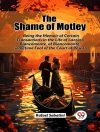Willa Cather’s *Death Comes for the Archbishop* is a poignant exploration of faith, culture, and the American West. Set in the Southwestern landscape of New Mexico, the novel intricately weaves together the lives of Catholic clergy, particularly focusing on the character of Bishop Jean Marie Latour. Cather’s lyrical prose and vivid descriptions immerse the reader in a world defined by both spiritual and physical landscapes, capturing the struggle between tradition and progress. The book is considered a hallmark of early 20th-century American literature, reflecting Cather’s thematic interests in the influences of place and identity while navigating the complexities of religious devotion and cultural assimilation. Willa Cather, an influential American novelist, was profoundly shaped by her experiences in the Great Plains and her deep interest in the unique cultures of the American Southwest. Her own religious upbringing and the rich tapestry of her life experiences informed her portrayal of faith and doubt, offering a nuanced perspective that resonates throughout the narrative. Cather’s work often highlights marginalized voices, making her exploration of the Catholic Church’s role in American life both relevant and timeless. This novel is highly recommended for those interested in the intersections of spirituality, identity, and place in literature. Cather’s masterful storytelling invites readers to meditate on the complexities of faith while appreciating the stark beauty of the landscape. Whether you are a long-time scholar of American literature or a casual reader, *Death Comes for the Archbishop* promises to enrich your understanding of Cather’s unparalleled contribution to literary modernism.
Willa Cather
Death Comes for the Archbishop [EPUB ebook]
A Journey of Faith and Friendship in the American Southwest
Death Comes for the Archbishop [EPUB ebook]
A Journey of Faith and Friendship in the American Southwest
Dieses Ebook kaufen – und ein weitere GRATIS erhalten!
Sprache Englisch ● Format EPUB ● Seiten 171 ● ISBN 4064066367879 ● Dateigröße 0.6 MB ● Herausgeber Willa Cather ● Verlag Good Press ● Ort Prague ● Land CZ ● Erscheinungsjahr 2021 ● herunterladbar 24 Monate ● Währung EUR ● ID 7940079 ● Kopierschutz Soziales DRM












